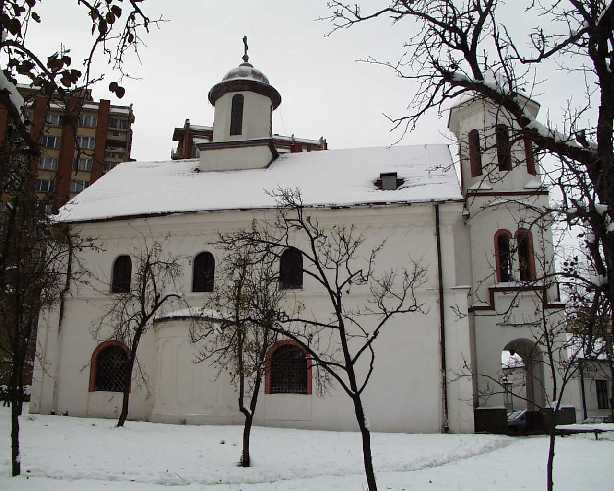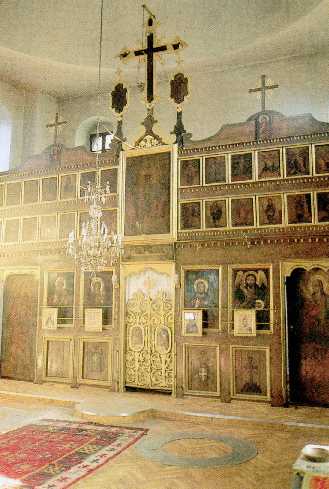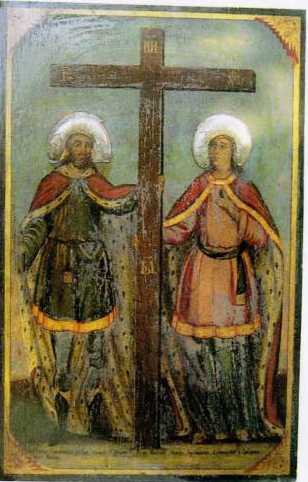
The Church of St. Nicholas is located in the foothill of the St. Nicholas' Hill, in the southern town part called Palilula. St. Nicholas' temple has its own history which is inseparable from the history of the town of Niš. It has perhaps been the witness of Niš history since the dawn of Christianity, which had found a strong bastion here.

ST. NICHOLAS' CHURCH IN NIŠ
There is little to be said about the first church of St. Nicholas, except for its location. The fundaments of the former church are now visible westward of the contemporary sacral building. It seemingly was an impressive construction of 20m in length and 12m in width. Together with its location, its age is also confirmed by the fact that, back in 1907, when the Chapel of Transfiguration was built, a mosaic floor was discovered inside the old church. The mosaic was covered with sand and bricks in order to be preserved. Some researchers of our past consider it to be the cathedral church of St. Procopius, which is positively known to have existed in the 11th century. The Church of St. Procopius was also mentioned in 1204 as the cathedral church of the newly formed Niš Episcopacy. The mystery of the episcopal church of St. Procopius is still hidden among the visible remains of the original church of St. Nicholas.

ST. NICHOLAS, ICONOSTASIS
The presence of St. Procopius' relics confirms the enormous reputation that Niš enjoyed in the Byzantine world. The Church of St. Procopius enjoyed great respect among the citizens of Niš, as well. It seems that this was the only Orthodox temple in Niš all along the lengthy heterodox reign. After the Peć Patriarchate had been restored, maybe even during the first decades of the 17th century when the political and economical circumstances in Niš and its surroundings were to a certain extent more favorable, a new church was built, or maybe reconstructed, on the fundaments of the former shrine. In accordance with new conditions, as well as due to the fact that the relics of St. Procopius are not in Niš any more, it is dedicated to the most popular saint among the Serbs, to St. Nicholas the Wonderworker. In 1860, Felix Kanitz found "some very old frescoes" on its walls. The Church of St. Nicholas was totally demolished in 1690, in a crazed revenge of the Turks. The Serbs, who had joined Austrians the previous year in their expelling of the Turks but had not withdrawn with Arsenije III Čarnojević, shared the destiny of their temple. The Church of St. Nicholas remained ruined until 1722, when it was rebuilt thanks to the support of the bishop Joanićije I and with the help of prominent citizens of Niš. This fact can be read in the inscription on a stone slab, written in Serbian and Greek. The slab is now immured above the chapel entrance door. These, somewhat more favorable, conditions for the Church of St. Nicholas lasted until 1737, as the account books of that time registered a large estate at the disposal of the Church. That year, the Serbian people again joined Austrians in their fight against the Turks. The metropolitan of Niš Georgije Popović was particularly active in this. These days, the Patriarch Arsenije IV Jovanović spent some time in the Church of St. Nicholas. Soon after that, the Turks recaptured Niš, and the population, being afraid of the revenge, withdrew under the leadership of Arsenije IV. Blinded by hatred and vengeance, the Turks devastated the temple of St. Nicholas. They did not tear it down, as it was built of hard material. They built a minaret onto the church building and, in the full delirium of arrogance, called it "Fetiye Mosque" - subjugated mosque. The very minaret could not stand up for long. It used to fall for several times, and the Turks were giving it back to the Christians in several occasions, out of superstition perhaps. Such situation had lasted until the year 1799, when the church was finally turned into the mosque, although the Turks were seemingly reluctant to go to it. The glorious past of the church kept disturbing them. For this reason, Mitat Pasha tore down the church-mosque in 1862, and built a new mosque in 1863/4 to the east next to it. This very building is the today's Church of St. Nicholas.

ST. NICHOLAS, ICONOSTASIS
Upon the liberation of Niš from the Turks, on the Day of Sts. Czar Constantine and Czarina Helena in 1879, the mosque was again adapted to the needs of the Ortodox religion, this time as the Church of St. Nicholas, dedicated by the Niš bishop Patron Victor of Chilandar. That was the time when the iconostasis was constructed, and the temple itself got a considerable number of beautiful icons painted by Ilija Dimitrijević. In 1926, a bell tower was added and the whole building acquired the real shape of a Christian temple.

STS. CONSTANTINE AND HELENA, the work of Ilija Dimitrijević from 1883
According to the legend, the Church of St. Nicholas altered religions for six times. To learn its past means to pass at the same time through the most important periods of the history of Niš. The most figurative proof that this is true are the cynical words of Turkish dignitaries, spoken at the moment of handing over the Church after the town was liberated: "Who is given the power over Niš by God, he is also given this house to worship Him in it".